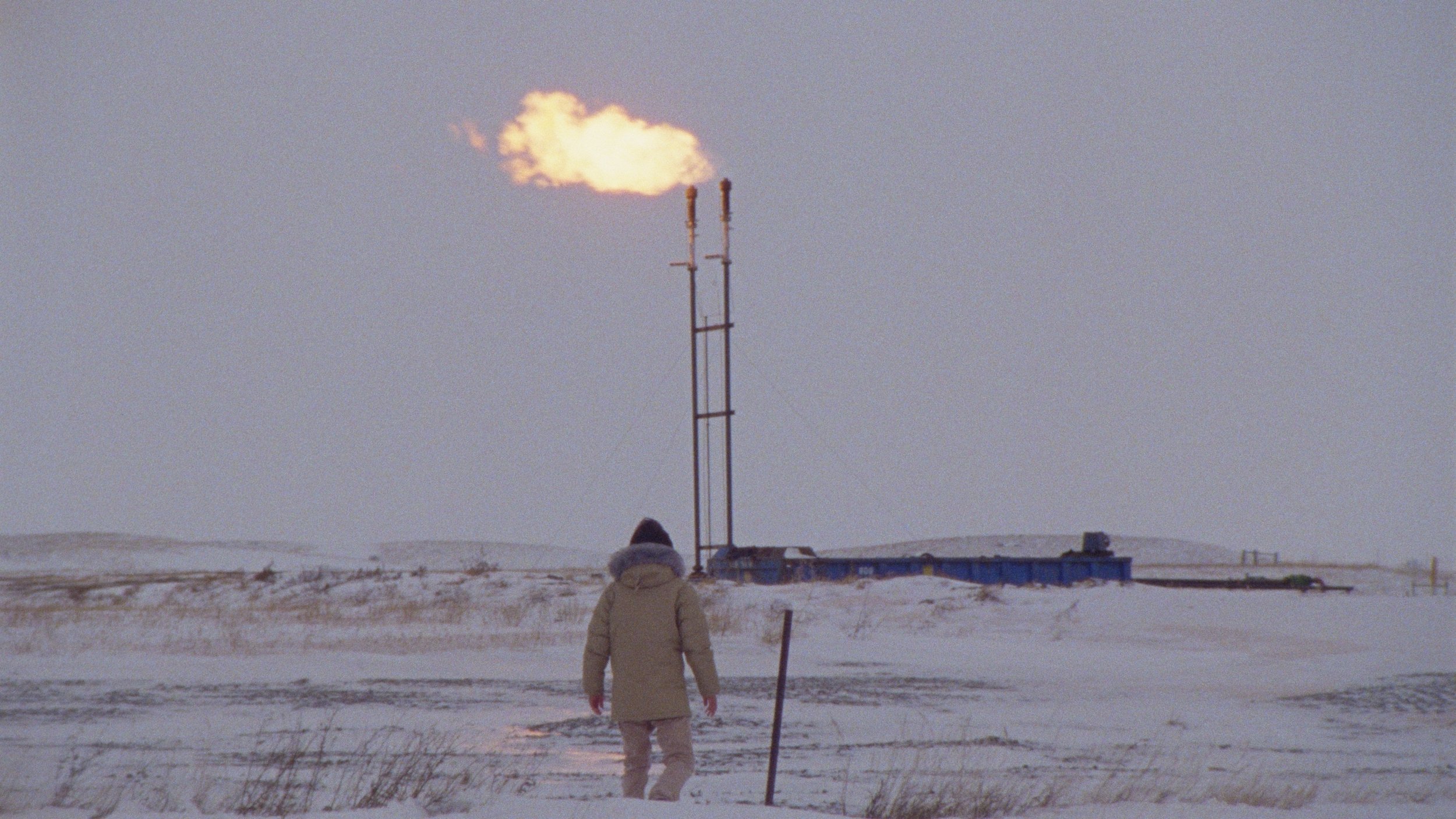'How to Blow Up a Pipeline' Is An Unforgiving Look At The Reality We May Be Approaching
Please go see this movie.
Ariela Barer (left), Jayme Lawson, Sasha Lane, Marcus Scribner, & Jake Weary in How to Blow Up a Pipeline. Courtesy of NEON.
Movies do a lot of things. They entertain, they inform, and they immerse us into worlds that can feel familiar to our own or as alien as they can be. This is one of those movies that hits closer to home than it should. Sometimes, these films do more than entertain, convincing and persuading us of which of our actions are right, and which are wrong. This is that film, like it or not. Slightly over 21 years ago, we received Ocean’s Eleven, the eleventh film from Steven Soderbergh, and a personal favorite film of mine. The film, starring some of the biggest names of its time, is a heist movie, one of the best heist movies. What makes Ocean’s Eleven great isn’t its story, which is excellent, but the way it uses its characters and the dynamics and relationships they have to create intrigue and layers to its heist, waiting to reveal certain aspects of its story until it needs to. This is the throughline between Soderbergh’s classic heist and NEON’s latest film, How to Blow Up a Pipeline. Directed by Daniel Goldhaber (Cam), How to Blow Up a Pipeline follows a group of environmental activists determined to make a difference in their world, a world in which global warming has progressed so far that spontaneous heat waves can cause fatalities and we have to fight the government to prevent the invoking of eminent domain to build oil pipes on land that’s belonged to our family for generations.
Forrest Goodluck in How to Blow Up a Pipeline. Courtesy of NEON.
The film opens in a hurry as we see the film’s protagonists coming together through the means of their group chat, organizing something. We don’t initially know what it is, but the snappy editing and pacing immediately draw interest into what’s happening as we’re introduced to this makeshift crew of activists determined to accomplish their goals, regardless of the consequences. We meet Xochitl (Ariela Barer), the film’s technical lead and a radical climate activist who turned to activism after her mother’s sudden passing. Xochitl is the “ringleader” in this case, assembling the crew and laying out the mission ahead. She finds Michael (Forrest Goodluck), a North Dakotan who’s turned to crafting homemade explosives to combat the gentrification of his home, Theo (Sasha Lane), one of Xochitl’s childhood friends, now riddled with leukemia caused by a local power plant, and Shawn (Marcus Scribner), a student she encountered in college, who worked on a documentary about the issues brought up by the surge in oil manufacturing. Enter Dwayne (Jake Weary), a mid-30s Texan with a young child who’s losing his land to the government.
There’s a certain grit and roughness about Pipeline that, for better or for worse, makes it less accessible than if it were polished. This movie makes its viewers think. This is amplified by the fact that the movie makes the choice not to focus on whether the actions committed by the protagonists are morally right or wrong. Instead, we get the distinction early on that, yes, this is terrorism, but are so drawn in by the characters and their lives that we forgive this, for the fact that it feels right.
Courtesy of NEON.
How to Blow Up a Pipeline accomplishes the difficult task of telling more than one narrative at once but does it so well that it feels seamless, because it is. For the majority of the first act, we stay in the present, following these characters on their mission, even though we don’t truly know why they’re doing it. This changes as we enter the second act when we get thrown into the first in a series of flashbacks that bring perspective into the aforementioned why. The genius of this is that by holding back on exposition, we have to think about why the characters do what they’re doing and what makes them tick. The way the flashbacks are structured throughout the film works perfectly, keeping us drawn into every aspect of the story while pulling us out of the main narrative to create suspense over and over again, expertly structuring it in a way that doesn’t get boring. This, coupled with Goldhaber’s directorial flare allows Pipeline to get away with its shortcomings, which are few and far between.
One of the most instantly noticeable things about How to Blow Up a Pipeline is it’s score, composed by Gavin Brivik. Brivik’s music feels like what you’d expect from a score by Hans Zimmer, coupled with aspects of more recent Safdie brothers’ scores. Brivik’s score adds to the constant tension being built throughout the entire runtime, which feels like a ticking time-bomb, waiting to go off. This all works because, at its simplest, How to Blow Up a Pipeline is a well-shot, raw, and timely relevant film that wastes no time capturing its audiences and pulls no punches. While there are things to nitpick, Pipeline is simply the most captivating film of the year so far, and is one that I can’t recommend enough.
How to Blow Up a Pipeline hits theaters Friday, April 7.



